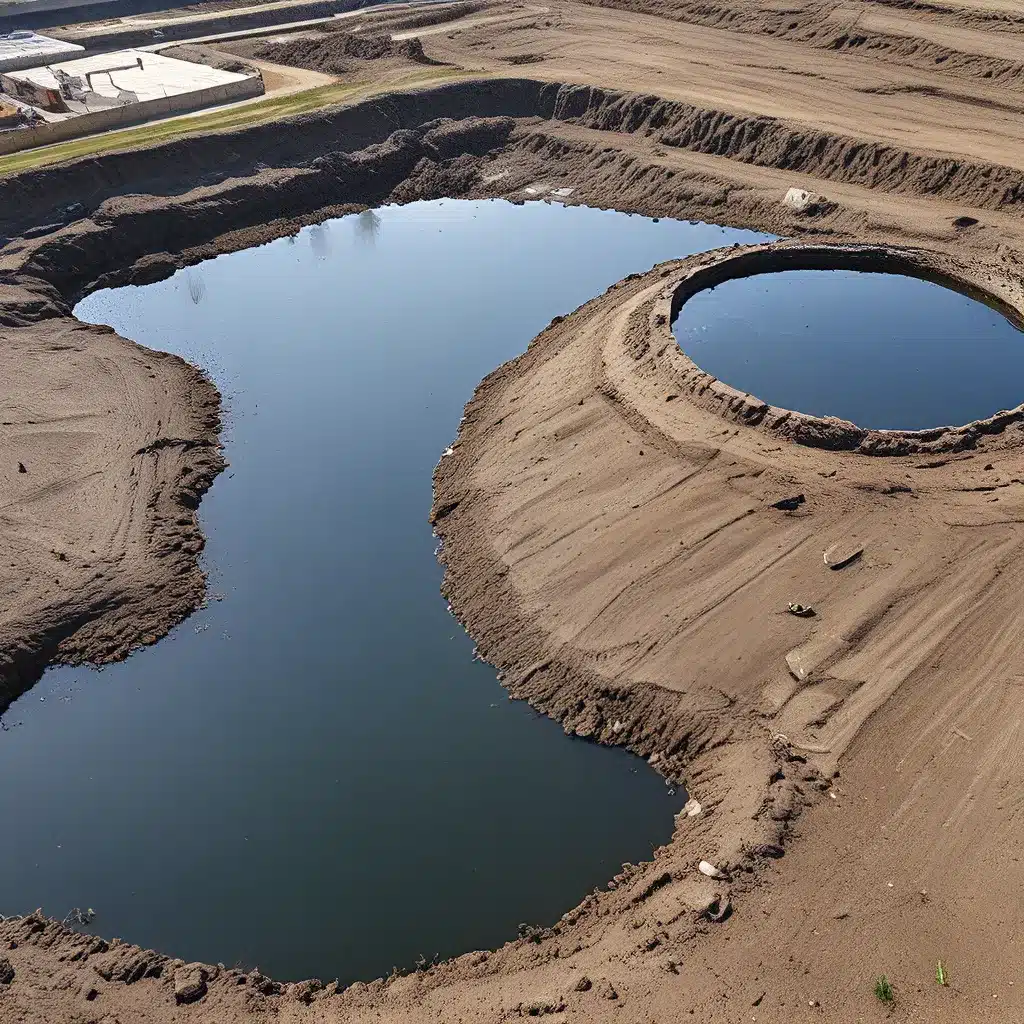
Uncovering the Hidden Power of Wastewater
Ah, wastewater – that unassuming byproduct of our daily lives. Who would’ve thought that within those murky depths lie the seeds of ingenious solutions? Well, my friends, the future of sustainable site remediation is about to get a whole lot brighter.
You see, I recently had the privilege of touring a rather remarkable facility that’s turning the tables on traditional wastewater treatment. It all started with a simple question: what if we could transform this often-overlooked resource into something truly remarkable? The answer, as it turns out, is nothing short of revolutionary.
From Poop to Potable: The Omniprocessor’s Ingenious Approach
Imagine this: I watched as piles of feces trundled up a conveyor belt, destined for a machine that would put them through a rigorous process of boiling, treating, and refining. And you know what? A few minutes later, I took a long, satisfying sip of the end result – a glass of crystal-clear, delicious drinking water.
Now, I know what you’re thinking: “There’s no way that’s safe to drink!” But let me assure you, this water is as pure as any bottled stuff you’d find on the shelves. In fact, I’d happily guzzle it down every day without a second thought. The engineering behind this marvel, known as the Omniprocessor, is truly awe-inspiring.
As I learned during my tour, this machine is part of a larger effort by the Gates Foundation to improve sanitation in developing countries. You see, the shocking reality is that over 2 billion people around the world use latrines that aren’t properly drained, or they simply defecate in the open. This waste contaminates drinking water, leading to devastating consequences – diseases caused by poor sanitation kill around 700,000 children every year, and prevent many more from developing physically and mentally.
The Omniprocessor is a game-changer in this regard. By burning the waste at a scorching 1,000 degrees Celsius, it not only safely destroys the material, but also produces water and electricity as byproducts. And get this – it’s completely self-sustaining, using the energy it generates to power its own operations. It’s the ultimate in efficiency and sustainability!
Reinventing the Sewage Treatment Plant
Now, you might be thinking, “Okay, that’s cool and all, but don’t modern sewage plants already incinerate waste?” Well, here’s the thing – many of them don’t. Some just turn the waste into solids that get stored in the desert, while others burn it using diesel or some other fuel, which can be prohibitively expensive, especially in poorer regions.
The Omniprocessor solves this problem through its ingenious use of a steam engine. By generating its own power from the waste it processes, it becomes a self-sustaining, cost-effective solution that’s perfect for areas with limited infrastructure and resources. In fact, the next-generation Omniprocessor will be able to handle waste from 100,000 people, producing up to 86,000 liters of potable water per day and a net 250 kW of electricity. Talk about a game-changer!
Overcoming the Challenges of Sustainable Sanitation
Of course, bringing this technology to the developing world isn’t as simple as just dropping it in and walking away. As the World Bank’s Water Global Practice director Jennifer Sara points out, there are often gaps in technical capacity, expertise, and resources that can prevent such innovations from being truly sustainable and widespread.
That’s why the Gates Foundation is taking a thoughtful, collaborative approach. They’re funding Janicki Bioenergy, the engineering firm behind the Omniprocessor, to not only develop the technology, but also work closely with communities in Africa and India to understand the unique challenges they face. The goal is to make the processors affordable enough for local entrepreneurs to invest in and start profitable waste-treatment businesses.
It’s a complex challenge, to be sure, but the potential payoff is huge. Imagine a world where waste is no longer a burden, but a valuable commodity that can be transformed into clean water and renewable energy. It’s a vision that’s closer to reality than you might think.
Innovating for a Water-Resilient Future
As the global population continues to grow, the pressure on our water resources is only going to intensify. That’s why innovative solutions like the Omniprocessor are so crucial to the future of sustainable site remediation and water resource management.
But the Omniprocessor is just the tip of the iceberg. All around the world, bright minds are working tirelessly to reimagine the way we think about water and sanitation. From smart metering systems that help reduce water waste to wave-powered desalination buoys that turn seawater into drinking water, the possibilities are truly endless.
And the best part? These innovators aren’t just dreaming up ideas – they’re actively collaborating with utilities, governments, and communities to bring their visions to life. As the World Bank’s Jennifer Sara put it, “Technology is a critical element that can help support us in improving water and sanitation sectors and strengthening water resources management.”
So, let’s raise a glass (of Omniprocessor water, of course) to the brilliant minds who are working tirelessly to create a more water-resilient future. The road ahead may be long and winding, but with innovators like these leading the charge, I’m confident that we’ll uncover even more wastewater wonders in the years to come.


